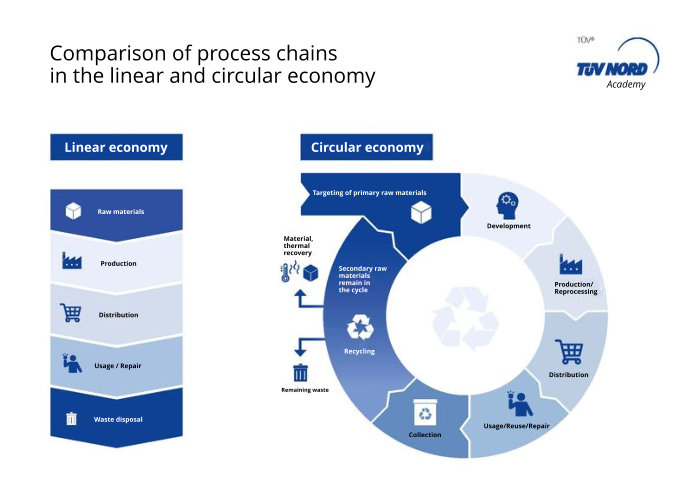Zero Emissions, Fast Cruising
Setting sail for the climate: sustainable boat innovations to conserve our planet's resources
Sustainability, safety and comfort combined: In times of climate change, it is crucial to use practical examples to show that we can maintain and improve our standard of living with sustainable solutions while conserving the planet's resources. We want to show that these goals can be achieved with innovative technologies and the circular economy. That is why we have converted an existing racing catamaran into a modern cruising boat, so that the existing platform does not have to be scrapped and at the same time a new product is created that meets all the criteria for safety, comfort and sailing pleasure. We want to take you on a journey with our new ship to jointly shape an environmentally friendly and sustainable future on water and on land. We will therefore be sharing our knowledge for a sustainable future with you at regular events.
CO2-free traveling
In an era in which the challenges of climate change are becoming ever more present, the search for environmentally friendly travel options is of crucial importance. In the maritime sector, the concept of CO2-free travel for boats is becoming increasingly important. The focus is on implementing innovative technologies and sustainable practices to minimise the environmental impact.
CO2-free travel for boats means the use of advanced propulsion systems such as electric engines or alternative, emission-free fuels. By doing away with traditional combustion engines, the carbon footprint can be significantly improved. Renewable energy sources also play a key role, with solar and wind energy as sustainable alternatives that reduce dependence on fossil fuels.
The pursuit of CO2-free travel for boats also requires the use of environmentally friendly materials in boat construction. Lightweight, durable and recyclable materials help to minimise the ecological footprint and increase the overall efficiency of the vessel.
This path to CO2-free travel is not only a response to the environmental impact, but also a commitment to shaping a sustainable future for the maritime industry. It’s time to explore the oceans in a way that not only broadens horizons, but also puts the protection of our planet at the centre.
Travelling with environmentally friendly materials

Fast
Advances in materials science have led to environmentally friendly materials that fulfil the requirements for speed and efficiency in maritime travel. Innovative technologies such as electric motors and modern propulsion systems, developed in line with sustainable principles, not only enable fast movement on the water, but also efficient utilisation of energy sources.

Comfortable
The integration of environmentally friendly materials in the maritime sector has a positive impact on travelling comfort. Modern composite materials, based on sustainable principles, not only enable a reduced environmental impact, but also offer outstanding comfort. These materials help to make the overall experience pleasant for passengers, for example by creating lighter and ergonomically designed structures.

Safe
The safety of ships and boats is in no way compromised by the use of environmentally friendly materials. On the contrary, modern composite materials guarantee high strength and stability, which leads to an improvement in safety standards. These materials are resistant to environmental influences such as salt water and are developed with the highest safety requirements in the maritime sector in mind. Overall, the use of sustainable materials creates a safe basis for maritime travelling.
Focus on EU initiatives to reduce emissions from aviation and shipping
Despite the comparatively small contribution of around 4 per cent to total greenhouse gas emissions in the European Union, the aviation and shipping sectors are alarmingly present in areas that are driving climate change through a rapid increase in emissions.
The main cause of this development is the excessive growth in passenger numbers and trade volumes. Recent efforts are aimed at reducing greenhouse gas emissions in these sectors both at EU and international level.
With the clear goal of achieving a 55 per cent reduction in emissions by 2030 and aiming for climate neutrality by 2050, the European Parliament is currently in the process of drafting proposals to reduce emissions from aviation and shipping. This includes the integration of the shipping sector into the Emissions Trading Scheme (ETS), the reorganisation of the aviation system and innovative proposals for more sustainable fuels that can be used for both aircraft and ships. Through these measures, the EU is actively endeavouring to make a significant contribution to the global reduction of greenhouse gases and to achieve its long-term climate goals.

Comparison of emissions from different modes of transport
The comparison of emissions from different modes of transport pays particular attention to pleasure craft, which often have a higher CO2 consumption than other means of transport. This illustrates that conventional propulsion methods of motor yachts and pleasure craft can cause significant emissions, which in turn significantly increases the environmental footprint of this popular leisure activity. It is undeniable that watercraft contribute to environmental impacts, especially when they are powered in traditional, unsustainable ways.
In this context, the urgency to explore and implement more sustainable alternatives in the field of water sports is emphasised. Electric boats and innovative propulsion systems are crucial elements in this endeavour to minimise the environmental impact of recreational boating. Electric propulsion systems not only offer the opportunity to reduce CO2 emissions, but also present a quieter and more environmentally friendly option for boaters and water sports enthusiasts.
The development and promotion of such technologies are crucial to making water sports more sustainable while maintaining the fun and enjoyment of boating. Through conscious choices, innovative technologies and support for sustainable initiatives, the watersports community can help reduce the environmental impact and contribute to a greener future.
*Sport boat with diesel engine and 5 l/h consumption. Emission in kg per capita and km
Bellevue: Luxurious and sustainable travel - combining innovation, high tech and carbon neutrality
The Bellevue catamaran presents itself as a pioneer of sustainable technology in the maritime sector and is equipped with state-of-the-art sails, efficient solar cells and powerful electric motors.
The pioneering batteries for the ship’s propulsion are specially designed for a weight/energy ratio and reduce the weight by an impressive 30% compared to conventional systems.
The catamaran’s solar cells are based on top modules with an impressive efficiency of 24%. This innovative technology enables maximum performance in a limited space, high low-light efficiency and an excellent thermal coefficient.
The use of solar energy (20 kWp) and the recovery of electricity via the propellers during sailing (4 kW/h) supplies the propulsion batteries (330kWh) and the batteries for domestic power (36kWh) with energy.
The catamaran is also manufactured entirely in a carbon sandwich construction to achieve maximum load-bearing capacity and low weight. As a result, the Bellevue catamaran embodies the symbiosis of sustainability, innovation and safety without compromising on comfort. Sailing without any CO2 emissions, it achieves an impressive average cruising speed of 15 knots and a maximum speed of up to 30 knots, setting the standard for environmentally friendly travel on the high seas.
Bellevue
Innovation in focus - modern technology for maximum efficiency
BMS Battery Management
The BMS (Battery Management System) in the catamaran intelligently monitors and controls the batteries. With precise voltage regulation, battery performance monitoring and an automatic cell balancing function, it ensures efficient and safe use of the energy sources. The BMS optimizes battery life and contributes to the stability of the electrical system on board.
BUS System
The BUS (Board Area Network) system is the heart of the catamaran’s home electronics. This intelligent network technology enables seamless communication between various electronic components on board. Through centralized control and real-time data transmission, the system offers efficient control of all functions, reduces cables, saves resources, reduces weight and increases comfort.
Upside Up safety
The Upside Up safety system is a pioneering technology that is revolutionizing safety at sea. Using innovative sensors and intelligent algorithms, the system constantly measures the load on the ship’s important structures. Potential overloading is detected at an early stage and the sails are proactively relieved. This ensures maximum safety and protects the occupants from unforeseen risks.
Hazard detection at sea
With the help of modern image recognition systems, the crew is reliably warned of objects on the surface of the water at an early stage. By using state-of-the-art camera technology in combination with artificial intelligence, objects at sea are detected that conventional systems such as radar or AIS miss: unsignalized ships, floating obstacles, buoys, inflatable boats, kayaks and people overboard.
Energy Recovery
Our catamaran uses a powerful photovoltaic and energy recovery system. The integrated solar cells convert sunlight into electrical energy, while the clever recovery system feeds energy back into the batteries via the screws while sailing. This innovative technology ensures a sustainable and efficient energy supply for an environmentally friendly catamaran.
Fly by Wire-Rudersystem
The fly-by-wire rudder system is a state-of-the-art steering technology that relies on electronic signals instead of conventional mechanical connections. Through the precise transmission of steering commands, it enables extremely responsive and efficient steering of the catamaran. This innovative system maximizes manoeuvrability and helps to take the driving experience and safety on board to a new level.
Using resources sensibly - the circular economy as a driver for sustainability
We have made a conscious decision to give an existing platform a new lease of life. We want to set an example to transform our economy into a circular economy. Carbon sandwich construction is a high-strength and durable material that can be both repaired and extended without losing its performance, so it makes sense to create a new product without sacrificing functionality. There are many ways to take this approach and we want to inspire you to think of new ways to conserve our planet’s resources while living a safe and comfortable life.

The Circulate Economy is an innovative concept that aims to use resources sustainably and minimize waste. Instead of linear production and consumption models based on disposal, the Circulate Economy relies on a closed cycle in which products and materials are reused or recycled at the end of their life.
This sustainable business approach considers the entire life cycle of products and materials, from production to use and disposal. The aim is to reduce resource consumption, minimize environmental impact and promote the sustainable use of materials.
The Circulate Economy not only promotes environmental protection, but also economic efficiency, as it helps to reduce waste and minimize the use of new raw materials. By integrating this approach into different industries, we can create a more sustainable and resource-efficient future.
We place particular emphasis on the efficient use and recycling of resources to minimize our environmental footprint. Our catamaran represents not only state-of-the-art technology and sustainable energy, but also an innovative approach to the life cycle of materials.
From the selection of building materials to disposal at the end of its useful life, we focus on a closed loop. Materials are carefully selected to ensure longevity and reusability. Through advanced recycling methods and the integration of recyclable materials, we set a standard for a maritime circular economy.
Our goal is not only to create an outstanding example of sustainable travel, but also to set a milestone in the development of boats that embody the principles of the Circular Economy. In this way, we are not only shaping the future of shipping, but also helping to protect the oceans and their resources.
Support our environmental activities - become part of our sustainable project
Do you want to play a pioneering role in creating a sustainable future and improve our standard of living at the same time? The use of innovative technologies and the approach of developing sustainable concepts creates new potential.
With the Bellevue catamaran, we are providing a platform to bring these ideas to the world. We will take part in sailing events, such as in St. Tropez (France), Porto Cervo (Italy), Barcelona (Spain), St. Johns (Antigua) or Newport (USA), where you can meet your customers and partners and make new contacts. At these locations in connection with the iconic ship, we organize events that will excite your customers and partners, inspire new ideas and create deep emotions.
We cordially invite you to take part in this pioneering project and actively contribute to promoting a sustainable future.
Find out more about the various sponsorship opportunities and how you can become part of the Bellevue ECO project.
Get in touch with us. Together we can achieve great things.
